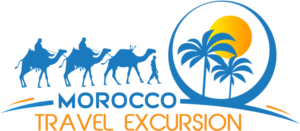Who are the people of Morocco like?
People of Morocco: Their traditions are similar to those of Europe, and their religion is closely related to that of the Arab world. They add nuance and a unique perspective of the cosmos to their traditions. What is the history of the Moroccans, and who are they?
The people of Morocco past
In addition to being far away and exotic, many tourists see Morocco as a living museum of the past. This is accurate: there still exist thousands of years of tradition alongside the most modern human innovations. Such a harmonious and difficult blend is the local population’s strength.
The earliest communities in Moroccan regions emerged about the XV century BC, notwithstanding the opinions of many experts who believe that this chronology is incorrect and that the earliest humans arrived considerably earlier. One of the first groups of Moroccans to settle were the Berbers, who still inhabit the oases.
First outsiders entered Morocco a few centuries later. The Phoenicians started constructing the cities and ports they needed along the beaches as soon as they arrived. The Carthaginians forced the Phoenicians to submit, but the arrival of Roman control resulted in significant war and destruction.
First century AD
Since the first century AD, the peace and tranquility of the area have only increased. Romans, who considered Morocco to be a part of the great empire, referred to People of Morocco as Moors. Currently, the local population is engaged in commerce and the construction of cities and villages.
Changes in religion were also occurring. Although Christianity is promoted there, the locals reject conventional orthodoxy and adhere to one of its heretical branches.
On Moroccan soil, such a respite does not endure long; shortly after, barbarian assaults on the Roman Empire restart, and after its demise, they extend to the entire nation. The Byzantine Empire and barbarian invaders are engaged in battle, and the Moroccans are imprisoned in the middle of it. Although the latter wins the battle, Byzantine power is short-lived. Arab invaders who ruled over the indigenous populace brought Islam to these nations. For a brief time, a separate state is founded; however, within a century, it disintegrates, splintering into regions ruled by regional dynasties.
Half of the sixteenth century
The second half of the sixteenth century was Morocco’s heyday. The confluence of the nation’s disparate regions promotes the growth of architectural and cultural orientation. Additionally, a sizable number of Muslims leave the Spanish regions, where they labor and enrich the native population.
The conflict between three powers in the seventeenth century made matters worse. The People of Morocco the nation were under intense pressure from Britain, France, and Spain, and it took a while to determine who possessed the area. Following the British’s final capitulation, Morocco is divided between the other two combatants, with the French keeping the “lion’s share.”
Numerous cultures and linguistic subgroups have developed as a result of such historical upheavals. The majority of Moroccans speak Berber and French in addition to Arabic, which is their native tongue. These people today number around 15 million.
People of Morocco Traditions and Customs
In general, Morocco combines Arab and European traits. This intriguing fusion has influenced People of Morocco traditions as well as the world of culture. Their hospitality, for instance, is one of their distinctive qualities. The visitor to a Moroccan home will receive the best service, be seated in the most prominent location, and be lavished with attention. Moroccans enter the house barefoot but, like many Europeans, leave their shoes on the porch. The invited guest must also bring a gift for the hosts when they arrive. ideal for desserts or gifts.
Moroccan Christmas
The Moroccan Christmas table astounds many People of Morocco. The Cutlery is totally absent. According custom, are not necessary. Classic dish made of grain couscous must be eaten with the hands, three fingers of one hand holding it lightly. You must wash your hands both before and after eating, and there are two jugs of water available.
Over tea, Moroccans value in-depth, protracted talks. They believe that the best tea is hot and fragrant, yet they never brew it in large glasses. Therefore, at a tea party, one person can consume more than five little cups of freshly brewed tea.
Moroccan food
The revered food item bread is another. It is rare to consume it quickly or in significant amounts. People of Morocco view this practice as demeaning to the sacred meal.
It is a common misconception that Moroccans should not express their romantic feelings in public. Therefore, hugging or kissing in public would be inappropriate. There are also different standards for attractiveness, particularly for women. Moroccan women cover their entire body and their hair with scarves. This is the best option given the environment in the area and adherence to decency standards. Too-short or exposed clothing is regarded as unfriendly and indecent.
Moroccans do not drink alcohol. We only offer it to tourists, as locals are prohibited from consuming alcohol due to their religious beliefs. During celebrations and family gatherings, Moroccans savor their favorite tea.
Interesting Moroccan people
Moroccan history complicated. Over time, the balance of power in their domain has changed, bringing with it both challenges and chances. Today’s Moroccans are gregarious, progressive, and entrepreneurial. These qualities have helped them weather the storm of events and keep their identity as a distinct and special People of Morocco. If you need any other information, kindly get in touch with us.

